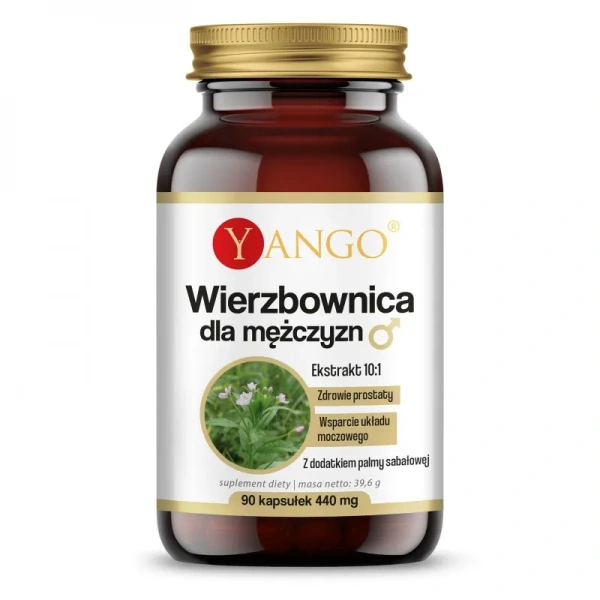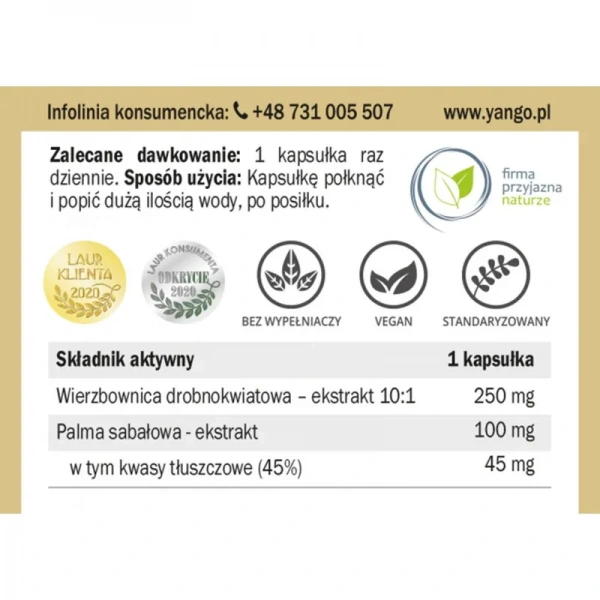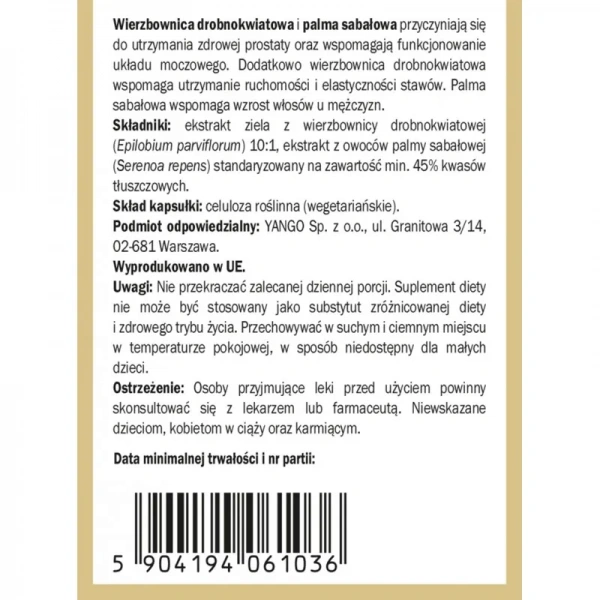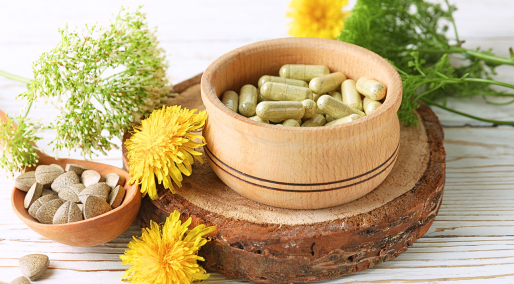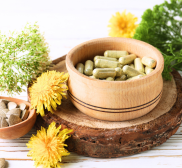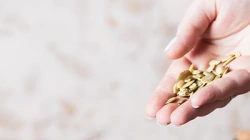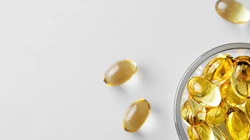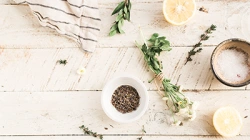Currency
- For the home
Health
- Bones and Joints
- Digestion and Healthy GI
- Essential Oils
- Fish Oil / Omega-3
- Healthy Sleep
- Heart and Cardiovascular System
- Immunity
- Liver
- MCT Oil
- Men
- Mind and Focus
- Minerals
- Pet Supplements
- Pro-Health Supplements
- Probiotics
- Senior
- Superfoods
- Urinary Tract
- Vitamins
- Vitamins for hair
- Vitamins for nails
- Vitamins for the skin
- Weight Management
- Woman
Healthy Diet
Herbs
Mother and Baby
Sport
Your Goal
Pet Supplements
Cosmetics
- Cosmetics for children
- Men's Cosmetics
- Unisex Cosmetics
- Women's Cosmetics
- Dezodoranty i perfumy
- Higiena jamy ustnej
- Kosmetyki akcesoria
- Kosmetyki dla dzieci2
- Kosmetyki do ciała
- Kosmetyki do higieny intymnej
- Kosmetyki do opalania
- Kosmetyki do pielęgnacji ust
- Kosmetyki do twarzy
- Kosmetyki do włosów
- Papier toaletowy / chusteczki
Main Page » Healthy Diet » Vegetarian / Vegan » YANGO Wierzbownica dla mężczyzn (Hoary willowherb, Urinary Tract Support) 90 Vegetarian Capsules
YANGO Wierzbownica dla mężczyzn (Hoary willowherb, Urinary Tract Support) 90 Vegetarian Capsules
Available: 10 pcs.
11,99 €
Price per portion: 0,13 €-+
Available: 10 pcs.
Add to cart
Buy for 1225 pts
After purchase you will receive 49 pts
You can exchange your accumulated loyalty points for this product. Log in to your account to check the number of available loyalty points.
After purchase you will receive 49 pts
After shipping your order, we will award you this amount of loyalty points. The loyalty program is available to customers who have an account in the store
Buy now, we will ship in 2-4 business days
Product Details
- Description
- Dosage
- Ingredients Table
- About the brand
- Nutritional Information
- Reviews (0)
- Articles
HOARY WILLOWHERB FOR MEN
Prostate health and natural urinary tract support
Hoary willowherb (Epilobium parviflorum) is a perennial green plant, belonging to the evening primrose family. It grows up to 1 metre high and can be found in Poland and other parts of Europe, as well as in Africa, the Middle East, India and China. Known and valued for centuries in folk herbalism, it has now begun to be noticed also by modern researchers.
NATURAL SUPPORT FOR MEN
One of the most common uses of hoary willowherb in men's supplementation is for prostate health. Numerous scientific studies confirm what has been used for centuries by herbal traditions: the unique chemical composition helps maintain male sexual function, among other things.
RELIEF FOR THE URINARY TRACT
Hoary willowherb extracts have become the subject of numerous scientific studies due to its chemical composition. Substances such as beta-sitosterol, phenols and flavonoids have been noted in it (2). Many plants of the Epilobium genus are being studied for their beneficial effects on the human body, and although a thorough analysis of the plant is still ongoing, its beneficial effects on urinary tract support, among others, have already been confirmed (3).
TRADITIONAL HERB
Although hoary willowherb has only recently received attention from modern science, it has been used for hundreds of years in folk herbalism, for example in the form of a tea infusion. The herb for its preparation was harvested in spring and then dried for later use.
SAW PALMETTO FOR EVEN BETTER PROSTATE SUPPORT
Saw palmetto (Serenoa repens), is a plant that occurs naturally in the southern part of North America. It is relatively small, growing up to 2 metres. In Europe, it is mainly grown as an ornamental plant, although modern research confirms its beneficial effects on male reproductive health and urinary tract support (4).
- Prostate health
- Urinary tract support
- Product suitable for vegetarians.
- Vegetable cellulose capsules, gentle on the stomach
(2) https://www.ema.europa.eu/en/documents/herbal-summary/willow-herb-summary-public_en.pdf
(3) https://www.ncbi.nlm.nih.gov/pmc/articles/PMC3791396/
(4) https://www.mdpi.com/2077-0383/9/4/957/htm
Dosage
1 capsule once a day. Recommended use: Swallow the capsule and drink plenty of water, after a meal.
Ingredients
Container: 90 Vegetarian CapsulesServing Size: 1 Capsule
Servings per Container: 90
Form: Vegetarian Capsule
Ingredients
Content in a portion
in 100 g
% RDI
Other ingredients
Hoary willowherb herb extract (Epilobium parviflorum) 10:1, Saw palmetto fruit extract (Serenoa repens) standardized to min. 45% fatty acids. Capsule composition: vegetable cellulose (vegetarian). Allergic information: Contains no crustaceans, eggs, fish, nuts, soy, dairy ingredients, celery, mustard, sesame. Produced without the use of artificial preservatives, fragrance or colouring. Product free from heavy metals such as arsenic, cadmium, lead or mercury.
About the brand
Although the name of Yango sounds exotic, it is a Polish company founded in 2014 and based in Warsaw. Yango is a Polish producer of natural dietary supplements, thanks to the direct import of many raw materials directly from the country of origin. The company offers its products at very affordable prices. The Yango offer includes about 70 products that can be grouped into four main categories: Human Body, Disease, Functional and Healthy Foods. The first of them improve the work of individual organs and systems, the disease section is all about supplements designed to support the fight against aging processes and deficiencies. In the Functional section, we find products for women and men, as well as natural cosmetics. Healthy Foods is a section with products designed to provide energy and vitality.
Nutritional Information
A dietary supplement / A nutrition supplement as a substitute for everyday diet, used for weight control.
Cannot be used as a substitute of a healthy and balanced diet.
Not to be used by pregnant or nursing women.
Do not exceed recommended dosage per day.
Store in a dark and dry place at room temperature out of the reach of small children. People taking medication should consult a doctor or pharmacist before use.
Best before: date on the package
All descriptions are the property of the www.mass-zone.eu. Copying or distribution is strictly prohibited! As per the Copyright Act from February 4th, 1994.
Manufacturer: YANGO sp. z o.o., ul. Granitowa 3/14, 02-681 Warszawa
Cannot be used as a substitute of a healthy and balanced diet.
Not to be used by pregnant or nursing women.
Do not exceed recommended dosage per day.
Store in a dark and dry place at room temperature out of the reach of small children. People taking medication should consult a doctor or pharmacist before use.
Best before: date on the package
All descriptions are the property of the www.mass-zone.eu. Copying or distribution is strictly prohibited! As per the Copyright Act from February 4th, 1994.
Manufacturer: YANGO sp. z o.o., ul. Granitowa 3/14, 02-681 Warszawa
Reviews
No one has written a review for this product yet. Be the first to write a review.
there is no articles
Customers also bought
OLIMP CREATINE MONOHYDRATE POWDER 550g
Creatine Monohydrate Powder. Dietary supplement containing micronized creatine monohydrate…
36,21 €
Add to cart
OSTROVIT Vitamin D3 + K2 90tabs
OstroVit D3 + K2 is a composition of vitamins derived from natural raw materials.…
2,94 €
Add to cart
YANGO Baikaline (Baikal skullcap) - 90 vegetarian capsules
Originally, in natural medicine, Baikaline was used mostly for its antiviral effect -…
16,15 €
Add to cart
NORSA PHARMA Laktoferin NUCLEO (Lactoferrin, 5 Nucleotide Complex, Vit. C) 30 Vegan Capsules
Laktoferin NUCLEO is a dedicated combination of the highest quality lactoferrin…
24,47 €
Add to cart
NOW FOODS Cayenne 500mg 250 Vegetarian Capsules
Herbal Support Supports Healthy Digestion Supports Blood Vessels Non-GMO…
15,42 €
Add to cart
OTHER PRODUCTS FROM THIS CATEGORY
PiLeJe Feminabiane Meno'Confort (Relieves Menopausal Symptoms) 30 Tablets
Feminabiane Meno'Confort is a dietary supplement for women to alleviate the troublesome…
20,55 €
Add to cart
ForMeds PRENACAPS MULTI 2 + DHA (Complex for Women from the 13th week of pregnancy) 60 capsules
PRENACAPS is a line of dietary supplements intended for women who are trying to…
21,04 €
Add to cart
Graviola ekstrakt (550 mg) 60 kapsułek - soul farm
"SKŁADNIKIgraviola ekstrakt 550 mg, kapsułka: pullulanOPISSuplement diety. Zawartość…
10,52 €
Add to cart
NOW FOODS D-Mannose (D-Mannoza) 170g
Urinary tract health support - D mannose is a naturally occurring simple sugar that…
35,48 €
Add to cart
PiLeJe Lactibiane Feminabiane Conception (Multivitamin for Women when Planning Pregnancy) 30 Servings
Feminabiane Conception is a specially developed dietary supplement that provides…
29,61 €
Add to cart
GARDEN OF LIFE Dr. Formulated Probiotics Urinary Tract + 60 Vegetarian Capsules
Supports the health of the urinary tract. Provides support for the digestive…
46,25 €
Add to cart
MARINEX LaSqualana Regenerative Oil with Squalane 50ml - Fragrance Version
A concentrated source of pro-youthful sea-building substance for the skin. Oil…
Add to cart
PiLeJe PORPHYRAL HSP DERM (Skin irritation, Regeneration of the epidermis) 50ml
Recommended for use in: case of irritated and dry skin, situation requiring special…
19,57 €
Add to cart
SWANSON Chasteberry Fruit (Menstrual Pain Support) 120 Capsules
Chasteberry Fruit, also known as Vitex agnus- castus, has a long history of use…
9,05 €
Add to cart
Himalaya Gasex (Digestive Support) 100 Tablets
Helpful in expelling digestive gas Supports digestion Helps to balance and…
9,30 €
Add to cart
ForMeds PRENACAPS Mag B6 (Magnesium + Vitamin B6 for Pregnant Women) 60 Capsules
PRENACAPS is a line of dietary supplements intended for women who are trying to…
12,23 €
Add to cart
ENZYMEDICA Lacto (Digestion of Milk) 30 Capsules
Many people have difficulty digesting meals containing dairy, resulting in discomforts…
22,02 €
Add to cart
NOW FOODS Dairy Digest Complete (Dairy Tolerance Enzymes) 90 Vegetarian Capsules
Dairy Tolerance Enzymes Digests Lactose, Dairy Proteins and Fats Maximum Dairy…
14,68 €
Add to cart
SWANSON Red Clover Blossom (Menopause Support) 90 Capsules
Promotes balance and comfort throughout the menstrual cycle and the menopausal…
11,01 €
Add to cart
SWANSON Avena Sativa Extract 60 Capsules
Bring back the passion into your romance with the energizing herbal power of Avena…
7,59 €
Add to cart
SWANSON Dong Quai (Tonic for Women) 100 Capsules
Nature's #1 tonic herb for women! A staple of traditional Chinese herbology, dong…
8,56 €
Add to cart
ForMeds BiCaps Libifem (Women's Sexual Health and Activity) 60 Capsules
BICAPS LibiFEM is a product designed specifically for women. It contains natural…
13,21 €
Add to cart
Himalaya AyurSlim (Digestion, Metabolism) 60 Capsules
Ayurvedic slimming formula. Exttract Garcinia cambogia helps in weight control,…
10,03 €
Add to cart
NOW FOODS Gluten Digest (Gastrointestinal Support) 60 Vegetarian Capsules
Gastrointestinal Support BioCore®DPP IV Helps Digest Gluten & Cereal Grains…
17,86 €
Add to cart
NOW FOODS Chaste Berry Vitex Extract 300mg 90 Vegetarian Capsules
Women's Health Standardized Extract With Dong Quai Supports Endocrine Function…
18,35 €
Add to cart
Newsletter
© 2023 mass-zone.eu. All rights reserved
Follow us
